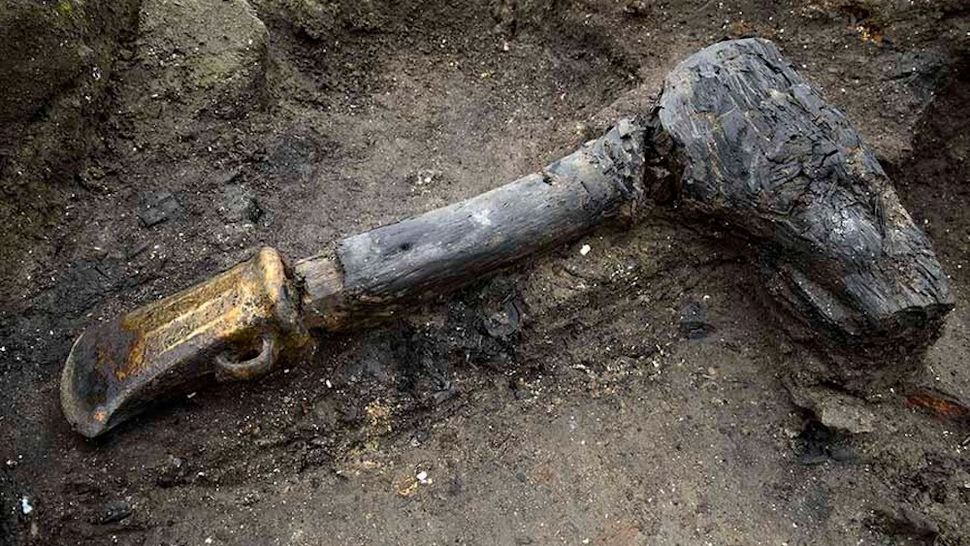'You could almost see and smell their world': Remnants of 'Britain's Pompeii' reveal details of life in Bronze Age villa
By Jennifer Nalewicki published 10 hours ago
Archaeologists are studying a Bronze Age village built on stilts to better understand the lifestyles of the people who lived there.

The remains of a Bronze Age ax found at Must Farm. (Image credit: Cambridge Archaeological Unit)
The remnants of an ancient village known as "Britain's Pompeii" are offering archaeologists new insight into the Bronze Age inhabitants who lived there, including how they seasoned their porridge and wild game.
Archaeologists discovered the settlement, known as Must Farm, during the 2015-2016 field season in the Fenlands, a swath of marshland in eastern England. The settlement, which dates to around 850 B.C., includes the remains of "four large wooden round houses and a square entranceway structure," all built on stilts. Excavations also revealed dozens of artifacts as well as human remains.
The site was largely destroyed in a fire that engulfed the village roughly 3,000 years ago and was completely abandoned by humans. However, similar to Italy's famous Pompeii, it was partially preserved by the environment, according to a statement from the University of Cambridge.
In the years since the site's discovery, researchers have studied Must Farm extensively, which has given them a better understanding of its unique architecture and the people who lived there, according to two new reports published March 5.
More:
https://www.livescience.com/archaeology/you-could-almost-see-and-smell-their-world-remnants-of-britains-pompeii-reveal-details-of-life-in-bronze-age-village
